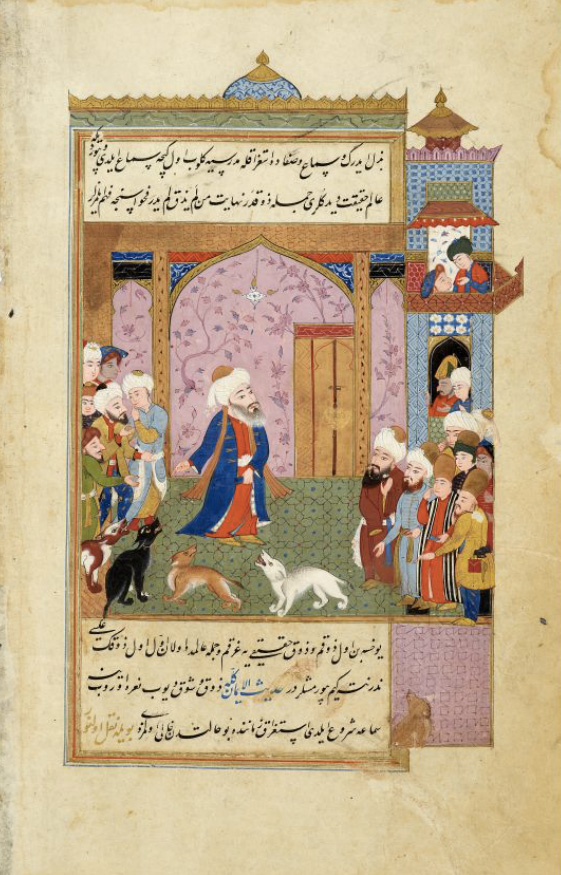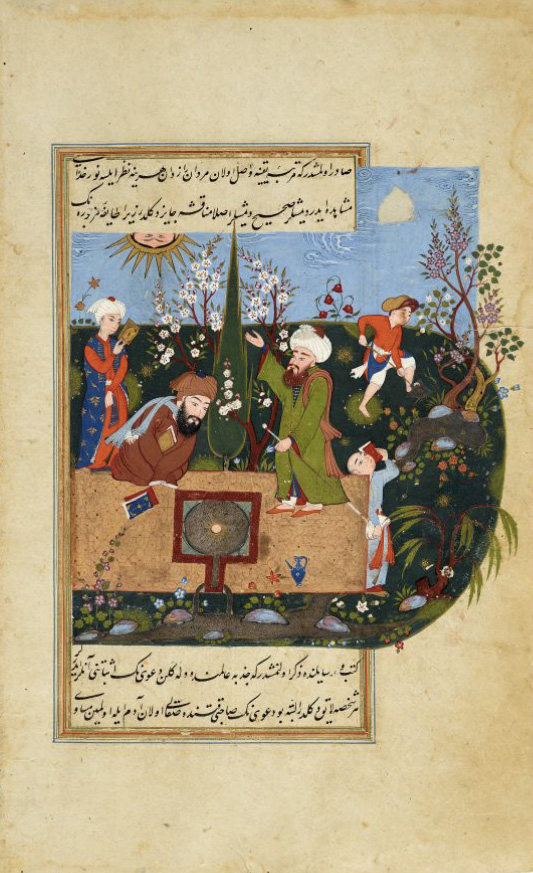The Persian poet and mystic Jalal ad-Din Muhammad Balkhi (1207-1273), better known as Rumi, endures as one of history’s most beloved and oft-quoted thinkers.  A handful of Persian accounts of Rumi’s life have been written, most famously the first by his son and the third, focusing on Rumi’s moralizing miracle stories, ordered by Rumi’s grandson and written by the dervish Shams al-Din A?mad, called Aflaki (d. 1360). In 1590, some three and a half centuries after Aflaki’s writings, the Ottoman sultan Murad III ordered a Turkish translation of a 1540 abridged version of Aflaki’s text entitled Tarjuma-i Thawaqib-i manaqib (Stars of the Legend). Two illustrated copies of the Murad translation survive — one, dated 1599, is held by Istanbul’s Topkapi Palace and features 22 miniatures; the other, a more lavish manuscript dating to the 1590s and including 29 miniatures, is held by New York’s Morgan Library.
A handful of Persian accounts of Rumi’s life have been written, most famously the first by his son and the third, focusing on Rumi’s moralizing miracle stories, ordered by Rumi’s grandson and written by the dervish Shams al-Din A?mad, called Aflaki (d. 1360). In 1590, some three and a half centuries after Aflaki’s writings, the Ottoman sultan Murad III ordered a Turkish translation of a 1540 abridged version of Aflaki’s text entitled Tarjuma-i Thawaqib-i manaqib (Stars of the Legend). Two illustrated copies of the Murad translation survive — one, dated 1599, is held by Istanbul’s Topkapi Palace and features 22 miniatures; the other, a more lavish manuscript dating to the 1590s and including 29 miniatures, is held by New York’s Morgan Library.
From The Morgan Library’s collection of Islamic manuscript paintings comes this remarkable glimpse of the rare manuscript, which captures the illustrated “life and miracles”” of Rumi with equal parts visual poetry and deep respect.
Rumi Leaves the ?alawiyya Madrasa at Aleppo at Midnight Followed by his Teacher Kamal Al-Din Ibn Cadim, Ruler of Aleppo
The Prophet Mu?ammad Reveals to Cali Secrets Revealed to Him During the Miscraj (Night Ride to Heaven)
Konya, Besieged During a Fight for the Throne of Sultan Suleyman’s Two Sons, is Protected by Clouds of Salt
See more in The Morgan Library’s online exhibition Treasures of Islamic Manuscript Painting from the Morgan. You can support the Morgan and their tireless preservation of history here.
For a modern rendering inspired by these classic manuscripts, see the exquisitely designed 2010 tome The Illustrated Rumi: A Treasury of Wisdom from the Poet of the Soul.’






















































